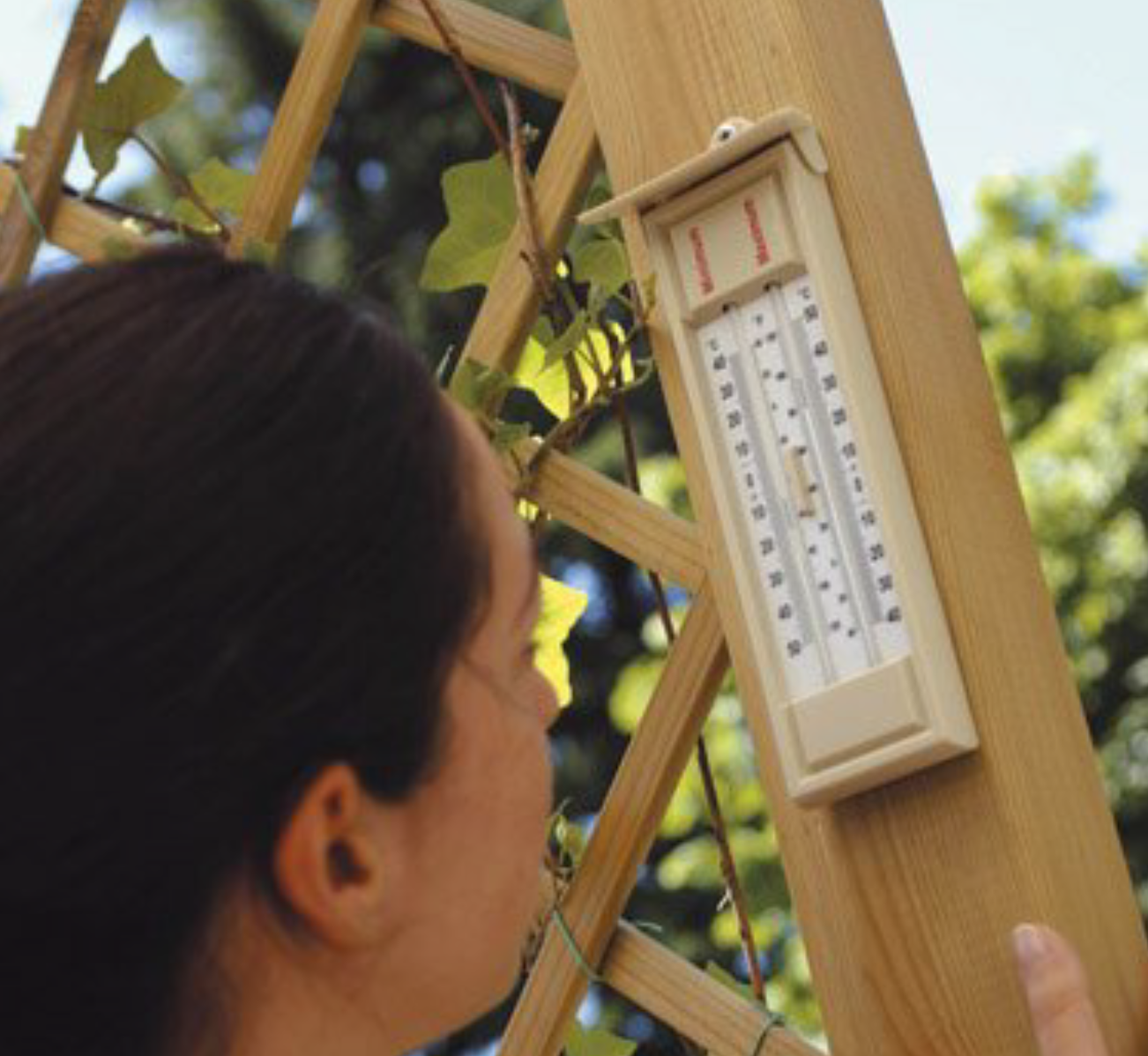

Temperature extremes in your garden
Taking temperature measurements in your garden is a great way to start investigating microclimates. We take a look at some maximum-minimum thermometers on the market.
Just how cold did it get last night and how hot will it be this afternoon? You can measure these daily extreme temperatures in your own garden using a maximum-minimum thermometer. A variety of thermometers are available in high street stores, garden centres and online, ranging from the traditional to the hi-tech.
Let’s start with the traditional liquid maximum-minimum thermometer. This was originally called the Six’s thermometer and named after James Six who invented it in 1782. The liquid in the column moves up and down due to expansion and contraction as the temperature changes and leaves behind little markers to show the maximum and minimum temperatures. Readings can be taken at any time but typically these measurements are made at 9am, resetting the thermometer afterwards by the simple press of a button. These liquid maximum-minimum thermometers can be picked up for less than £10.
Digital maximum-minimum thermometers have an LCD screen and are easier to read. These come as outdoor thermometers with a splash proof cover for outdoor use. The maximum and minimum temperatures are stored and can be reviewed at any time. The blue button resets the values ready for the next day’s measurement.
If you don’t want to venture outside to read and reset the instrument then a remote sensing thermometer may be for you. These instruments have sensors that are placed outdoors with the LCD display console kept indoors. Sensors are either on the end of a cable that is between 1.5 to 3m long, or linked wirelessly with a range of about 30m. Prices range between £10-15.
Just remember whichever you choose, the golden rule is to keep the thermometer (or sensor) out of direct sunshine, so that it reads the temperature of the air. And don’t be fooled by the decimal point on the LCD thermometers – this doesn’t mean they are accurate to the nearest 0.1°C – more like 1°C if you are lucky.




